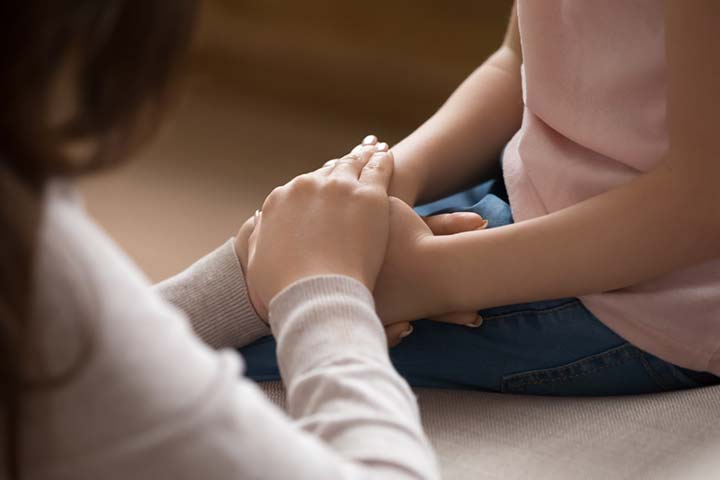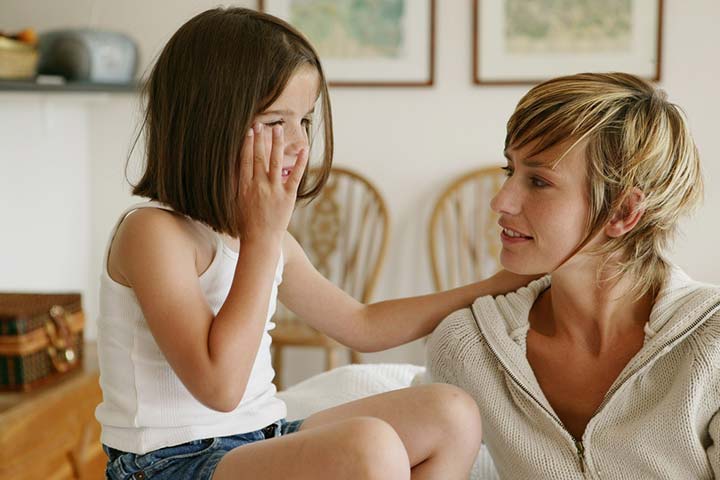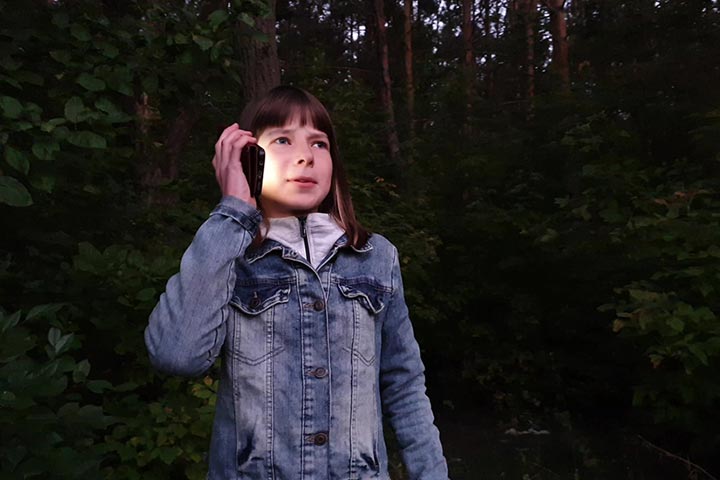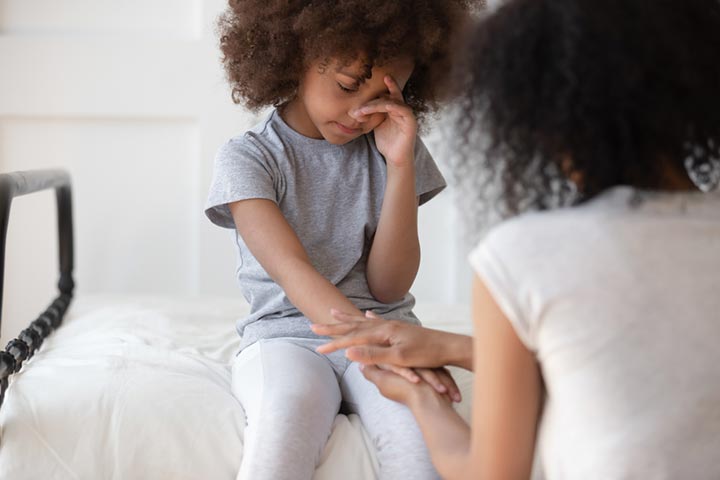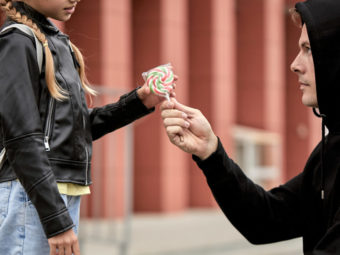
Image: Shutterstock
We live in a world that is, unfortunately, home to some of the worst crimes. It is our duty as parents to do what we can to protect our children from danger. Children are innocent and pure at heart. They rarely suspect the motives of people approaching them, which can easily be taken advantage of. They perceive most people and situations as good, and it is difficult for them to differentiate between what is acceptable and what is not. There have been numerous instances where people have taken advantage of the innocence of children by fooling and tricking them. Though they don’t realize the abuse at such a young age, oftentimes the trauma is faced at a future date when they grow up. And when the trauma finally sets in, it can detrimental for one’s mental health and can lead to other trauma-related issues.
The Centers For Disease Control And Prevention (CDC) has estimated that close to one in every four girls and one in every thirteen boys go through or have been at the receiving end of child abuse, inappropriate behavior, and misuse at some point in their childhood (1). One way of protecting your child from such evils is by making them aware of good touch and bad touch. It is an important topic to bring up with your child, and here’s how you can do it:
1. Talk About Body Parts Early In Life
Image: Shutterstock
Teach your child about all the different parts of their body. And while you’re at it, don’t shy away from telling your child about their private parts. Refrain from masking what it is called with a nickname. Instead, just as how you would call a nose a nose, call their private part what it is. When you avoid talking about their private parts confidently, they will learn that it is something to be ashamed of. Children emulate adults, so if you are embarrassed about a specific body part, they will feel the same way.
2. Your Body Belongs To You Alone
Image: Shutterstock
We all have one body, and that is ours alone — your child needs to know this. Reinforce the fact that they are the owners of their bodies, and they decide whether or not they are comfortable with someone invading their personal space. Your child needs to know that if they do not want to be hugged or kissed, they have every right to refuse it, and the other person must oblige, no matter who they are. It could even be an uncle, aunt, neighbor, or grandfather.
3. The Swimsuit Rule May Help
Image: Shutterstock
一般来说,没有人会碰你任何地方哟ur body without permission. It may be easier for you to explain bad touch with the help of the swimsuit rule. This means that you tell your child that all the parts covered by a swimsuit are no-go zones — no one should touch your child in these areas, as they are private parts.
4. Be Mindful Of Your Tone
Image: Shutterstock
How you convey a message can sometimes be more crucial than the message itself. When you talk to your child about keeping their bodies safe and taking ownership over their bodies, don’t laugh about it or say it in an embarrassed manner. The chances are that, as parents, you feel awkward addressing such topics. If that is so, bring it up as a part of the conversation during specific situations. For example, before visiting the doctor, during bathing time, or when you help your child get dressed. Tell them firmly but clearly that there is such a thing as good and bad touch, and explain what it means.
5. Differentiate Between Good Touch And Bad Touch
Image: Shutterstock
在某种程度上,你必须开门见山,differentiate between good touch and bad touch, so they understand what you mean. Make them know that, more often than not, a good touch will make them feel nice. This could include a pat on the back or a hug to make them feel cared for, or an affectionate kiss from a relative. On the other hand, a bad touch can make them feel icky, disgusted, uncomfortable, or painful. This could include someone trying to pinch, rub, hit, or touch your child’s private parts.
6. Don’t Make This A One Time Thing
Image: Shutterstock
The conversation about good and bad touch should not be a one-time thing — constantly talk about it with your child. Parents are advised to have age-appropriate conversations with their children continually because they will have more questions as they grow up. They will be exposed to the media, their peers, and circumstances around them, all of which will require explanations from your end.
7. Tell Them How To Get Away From Uncomfortable Or Dangerous Situations
Image: Shutterstock
In addition to teaching them about good and bad touch, you also need to tell them how to get away from a situation where they find themselves in danger. For example, if they suspect that they are in the company of a molester, let them know that they should not be alone with the said person at any given point in time. They should get away from that place if they are alone with a perpetrator and call for help immediately.
8. Be A Confidant
Image: Shutterstock
It’s not easy to win your child’s trust. Most of the time, children are hesitant at sharing their feelings with grown-ups. Pushing them to talk will only aggravate the situation and cause them to close up. You need to establish a bond of trust with your child. They should be able to confide in you and tell you when something is wrong. Reinforce the fact that you will be there for them and that they can always reach out to you no matter what.
9. Don’t Shame Them — Tell Them It Isn’t Their Fault
Image: Shutterstock
Sadly, there may be instances where even if you have prepared your child, they may have bad experiences that are out of their control. When this happens, let them know that it is not their fault. Assure them that they do not have to harbor feelings of guilt and shame about themselves, and the only person who has to be ashamed is the one who misbehaved.
Make efforts to normalize talking about body parts, good touch and bad touch, and people’s troubles. Letting your child watch the world through rose-colored glasses is not going to help them. The world can be a beautiful place filled with lovely people, but it has its fair share of evils too. How did you approach your child with the topic of good touch and bad touch? Was your child receptive to the information they received? Share your thoughts with us in the comments below!
References:
- Preventing Child Sexual Abuse
https://www.cdc.gov/violenceprevention/childsexualabuse/fastfact.html

